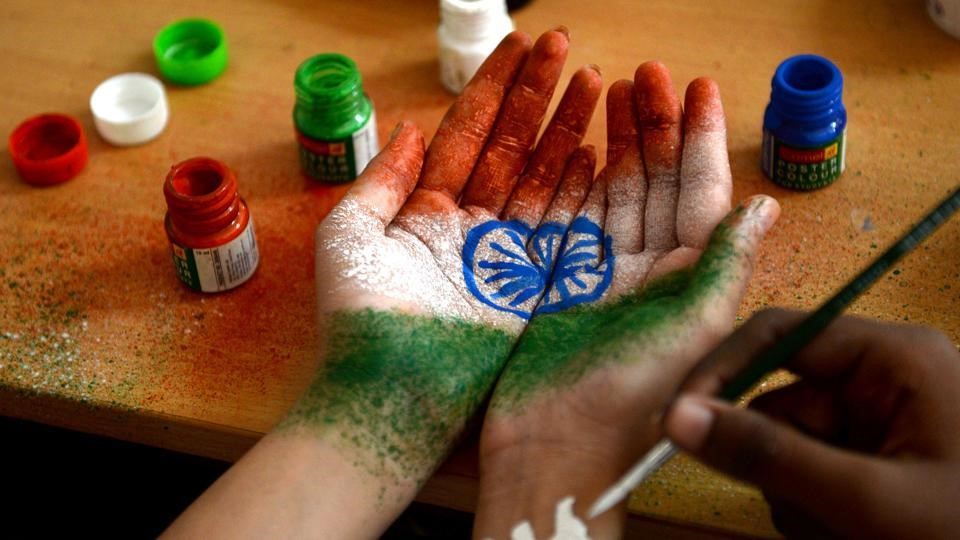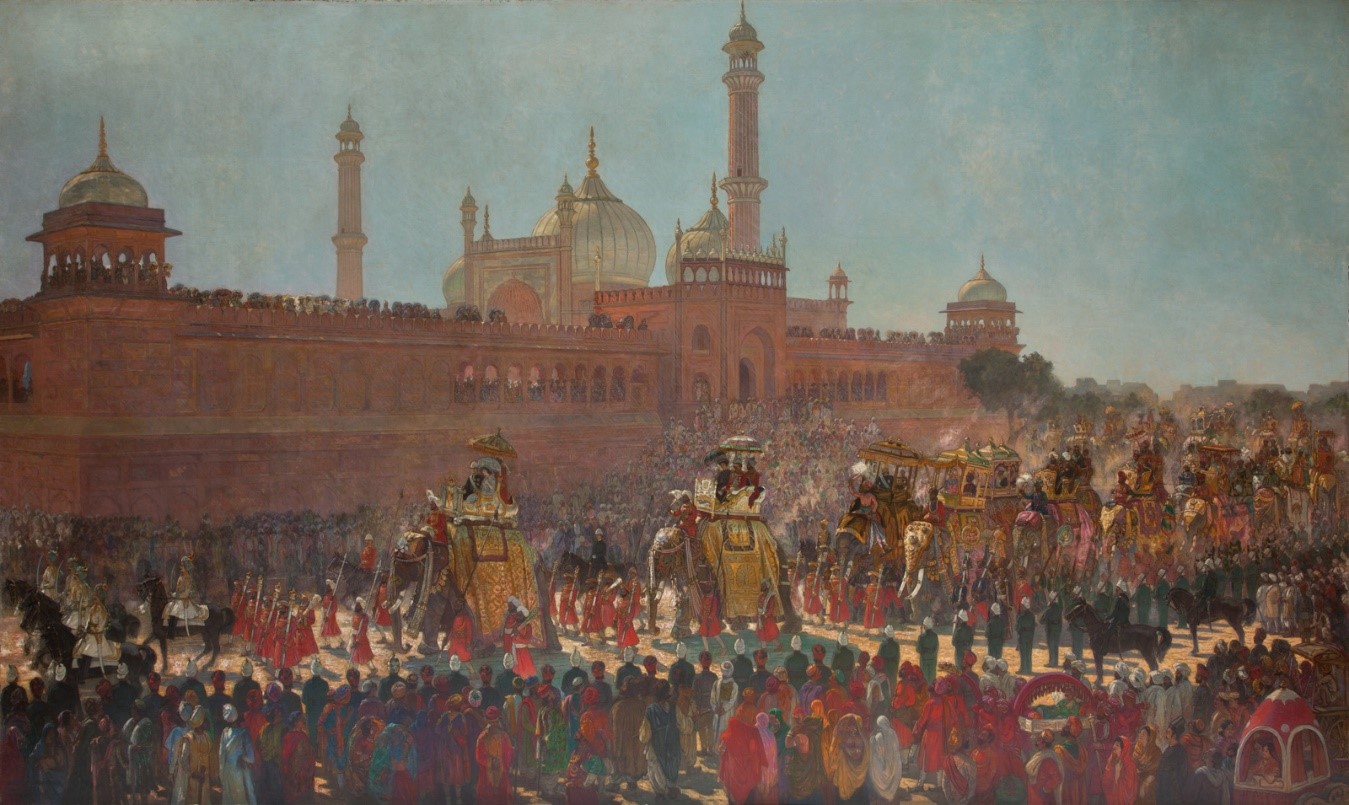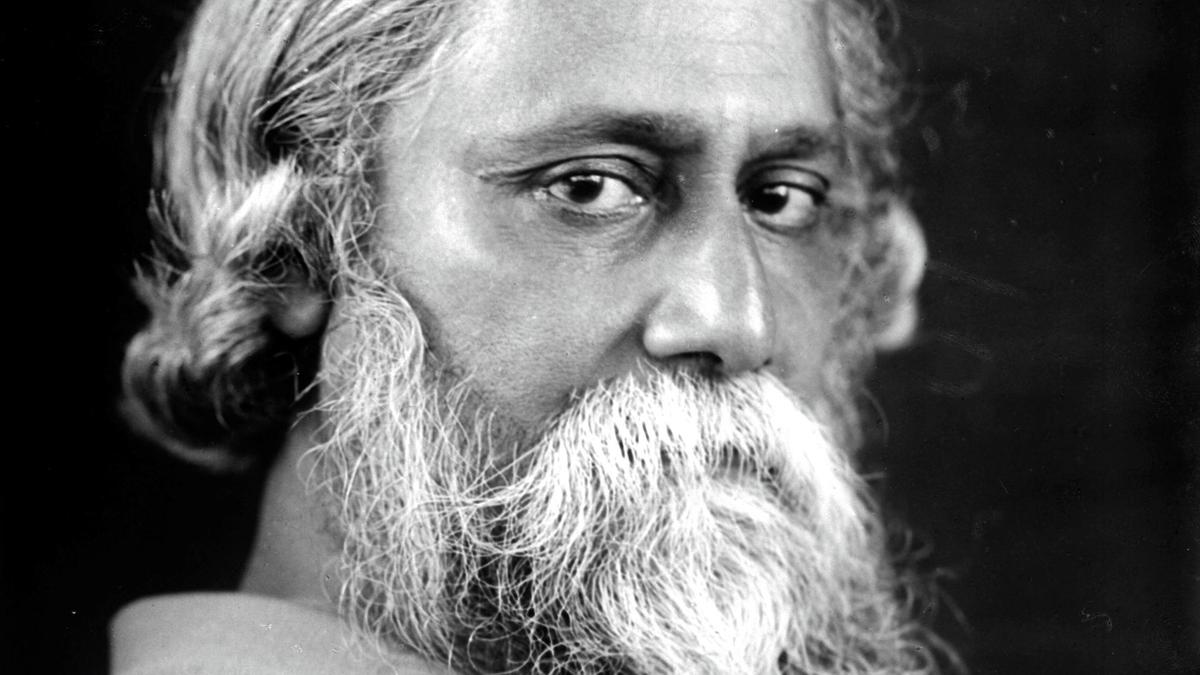By Smita Mukerji

National Anthem of the Republic of India
The controversy surrounding the composition adopted as the national anthem of India is well-worn by now. As many times as authoritative and fact-based rebuttals are issued to counter the blather, that the poem had been composed in praise of King George V, it refuses to subside, rearing its head each time some fool discovers his voice and decides to make his ignorance public.
But we will go into none of that here. With this piece we will instead try to understand the poem also known as the ‘Morning Song of India’, as it was named in the English translation of the song by the poet himself, which is still sung in that form as the prayer in the Besant Theosophical College in Madanapalle, Andhra Pradesh.

‘Jana-Gaña-Mana’, initially titled ‘Bhārata Bhāgya Vidhātā’, was meant as a hymn addressed to the abstraction conceived as the Supreme Mover who is, in the poet’s own words, the ‘Dispenser of the destiny’ of Bhārata, the ancient realm of India. Essentially this construct itself imparts a sacred character to and implies deep reverence for the land of India.
An adherent of the Brahmo Samaj, Rabindranath Tagore saw the Divine as beyond form and name and looked upon his Motherland as the blessed ground, the conscious manifestation of the Supreme Energy in Her diverse forms and course through the ages.
The song was sung on December 27, 1911 at the Congress session in Kolkata, as also at the foundation day programme of the Adi Brahma Samaj, a reformist and renaissance movement of Hindu religion, in February 1912, and appeared in its official publication ‘Tatwabodhini Patrika’ in their collection of psalms.
With the term ‘Bhārata Bhāgya Vidhātā’ the masterly versifier invokes the immortal Grand Spirit of Bhārata to awaken a slumbering, unconscious nation (‘nidṛta Bhārata jāgē’). Composed in Sanskritised Bangla or Sādhu Bhāṣa, the recondite metaphorical representations in the work still render its meaning unclear to most people, unless one looks at the signification through the entire composition. Below a translation is presented which is also an explication:
Jana-gaña-mana-Adhināẏaka jaẏa hē Bhārata-bhāgya-Vidhātā!
Paṇjāba Sindhu Gujarāta Marāṭhā Drāviḍa Utkala Baṇga
Viṇdhya Himāćala Yamunā Gaṇgā uććhala-jaladhi-taraṇga
Tava śubha nāmē jāgē, tava śubha āśiṣa māṅgē, gāhē tava jaẏagāthā
Janagañamaṇgaladāẏaka jaẏa hē Bhāratabhāgyavidhātā!
Jaẏa hē, jaẏa hē, jaẏa hē, jaẏa jaẏa jaẏa jaẏa hē!O Thou Lord of the hearts of our people, hail the Dispenser of Bhārata’s destiny!
Punjab, Sindh, Gujarat, the land of Maratha, Dravida, Utkala and Banga
The Vindhyas, the range of Himalayas, the Yamuna and the Ganges
The frolicking waves of the oceans lapping Thy shores
All arise at Thy auspicious name and crave Thy benediction
And sing Thy triumphal fame
Oh Thou Bestower of salubrity to our nation, hail the Dispenser of Bhārata’s destiny!
Glory be unto Thee!
Aharaha tava āvhāna praćārita, suni tava udāra vāñī
Hiṇdu Bauddha Sikha Jaina Pārasika Musalamāna Khṛsṭānī
Pūraba Paśćima āsē, tava siṃhāsana-pāsē
Prēma-hāra haẏa gāṅthā
Janagaña-aikya-vidhāẏaka jaẏa hē Bhāratabhāgyavidhātā!
Jaẏa hē, jaẏa hē, jaẏa hē, jaẏa jaẏa jaẏa jaẏa hē!Unceasingly Thy summons resound
Hearkening Thy gracious call
The Hindu, Buddhist, Sikh, Jaina, Parsi, the Muslim and the Christian
The East and the West converge; they press to Thy hallowed throne
The garland of love thus strung together
Thou art the Ordainer of unity, hail the Dispenser of Bhārata’s destiny!
Glory be unto Thee!
Patana-abhyudaẏa-baṇdhura paṇthā, yuga yuga dhāvita yātrī
Hē Ćirasārathi, tava rathaćakrē mukharita patha dinarātri
Dāruña viplava-mājhē tava śaṇkhadhvani bājē
Saṇkaṭa-duḥkha-trātā
Janagañapathaparićāẏaka jaẏa hē Bhāratabhāgyavidhātā!
Jaẏa hē, jaẏa hē, jaẏa hē, jaẏa jaẏa jaẏa jaẏa hē!Decline and resurgence mark the undulating passage on
The ground we have tread as pilgrims through the ages
Oh ‘Timeless Charioteer’, the wheels of Thy chariot resonate eternally on this path on days and at night
In the midst of these fierce upheavals, Thy conch shell sounds
Thou Deliverer from distress and tribulation!
Oh Thou Illuminer of our trying journey, hail the Dispenser of Bhārata’s destiny!
Glory be unto Thee!
Ghōra-timira-ghana nibiṛa niśīthē pīḍita mūrćhita dēśē
Jāgṛta ćhila tava avićala maṇgala natanaẏanē animēṣē
Duḥsvapnē ātaṇkē rakśā karilē āṅkē
Snēhamaẏī tumi Mātā
Janagañaduḥkhatrāẏaka jaẏa hē Bhāratabhāgyavidhātā!
Jaẏa hē, jaẏa hē, jaẏa hē, jaẏa jaẏa jaẏa jaẏa hē!Through intense darkness and the bleakest of nights
As the afflicted land languished in a swoon
Abiding in Thy vigil with unfailing blessings
Eyes lowered and unflinching
Didst Thou protect us in Thy lap, in tormenting nightmares of terror
Thou art that Ever-loving Mother
Oh Thou Dispeller of suffering, hail the Dispenser of Bhārata’s destiny!
Glory be unto Thee!
Rātri prabhātila, udila raviććhabi pūrba-udaẏagiribhālē
Gāhē vihaṇgama, pūñya samīraña navajīvanarasa ḋhālē
Tava karuñāruñarāgē nidṛta Bhārata jāgē
Tava ćarañē nata māthā
Jaẏa jaẏa jaẏa hē jaẏa Rājēśvara Bhāratabhāgyavidhātā!
Jaẏa hē jaẏa hē, jaẏa hē, jaẏa jaẏa jaẏa jaẏa hē!The night has passed and the Sun has arisen now
Casting its light on the horizon over the Eastern hills
The birds sing, an auspicious breath
Infusing the elixir of new life
To Thy compassionate-laden call
The slumbering nation awakens
At Thy blessed feet we bow our heads
Ever glorious Thou art the King of Kings, hail the Dispenser of the destiny of Bhārata!
Glory be unto Thee!

The song enumerates the physical identifiers of the land of Bhārata to evoke the vision of the nation before the eyes of its inheritors. In those dark times of our enslaved land, the poet describes the turmoil in his mind witnessing the grovelling obsequiousness of Indians before a foreign ruler, completely defeated and enslaved in mind and body. He seeks to remind them with this composition of their true nature, the Spirit from which they derive their bequest. In a letter to Pulin Behari Sen, Tagore elucidates the import of the song: “I pronounced the victory in Jana Gana Mana of that Bhagya Vidhata [Lord of Destiny] of India who has from age after age held steadfast the reins of India’s chariot through rise and fall, through the straight path and the curved. That Lord of Destiny, that Reader of the Collective Mind of India, that Perennial Guide, could never be George V, George VI, or any other George.”
Although being a Brahmo he did not believe in images of gods, Tagore employs the vision of Śri Kṛṣña in the Mahabharata to conceptualise this ‘Ruler of the Destiny of Bhārata’, as the eternal charioteer blowing the conch shell to guide the course of this nation. The same Divine Being is addressed as the Mother when he describes the nurturing and protective warmth of the Spirit, ever-watchful and full of love for Her Children. He describes Bhārata as a sacred landscape and its inhabitants who have traversed its length and breadth through time, returning to it time and again with each birth as ‘pilgrims’ visiting a sacred tract.
What conception the poet Rabindranath Tagore really had in mind as the ‘mother of Indians’ comes through in another composition by him:
‘ও আমার দেশের মাটি, তোমার ‘পরে ঠেকাই মাথা।
তোমাতে বিশ্বময়ীর, তোমাতে বিশ্বমায়ের আঁচল পাতা ॥’
(Transcription: O āmār dēśēr mātī, tōmār ‘porē ṭhekāyi māthā.
Tōmātē viśwamayīr, tōmātē viśwamāyēr āṅćal pātā.)
Composed in 1905, this hymn was written before the ‘Morning Song of India’ and roughly translates as follows:
O the soil of my native land, I bow down and touch my head to your sacred dust.
In you rests the Universe and through you is felt the loving touch of the Universal Mother.
ओ मेरे देश की माटी, तुम्हारे चरणों पर रखूं माथा ।
तुम हो विश्वमयी, तुम ही हो आंचल विश्वमाता का ॥
(तुम्हारे ही स्वरूप में विश्वमाता का फ़ैला हुआ आँचल बसता है।)
The poet’s sentiments become clear in these lines, that he saw the motherland as an extension of the Supreme Mother Goddess and that ideation which he addressed as the mother of Indians.

From its past glory, to the devastation of invasions, the abject slavery of a century, to a proud, growing nation today, it has been a long journey for Indians, which the national anthem of India captures beautifully in a single composition. It speaks of the country not merely as a landmass but of its spiritual essence, the living embodiment of which is Bhārata, its inhabitants and their collective experience. It addresses the truest part of our being underlying our sundry identities and motivations, our consciousness as a nation. It should be sung in that spirit with pride and an awareness of who we truly are, instead of cavilling about it from a superficial understanding.
Cover picture source: HT
First published August 15, 2018 at Jagrit Bharat.
